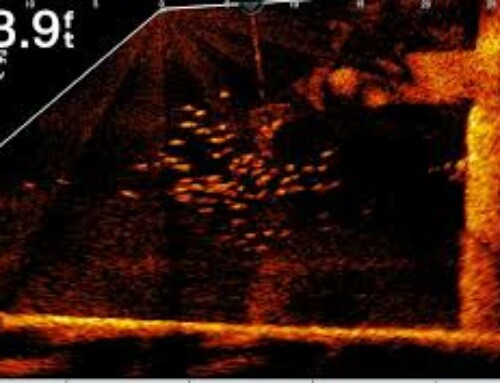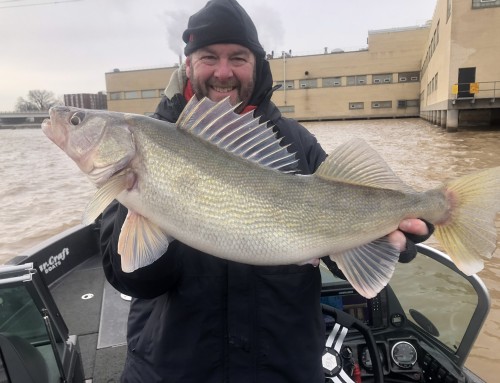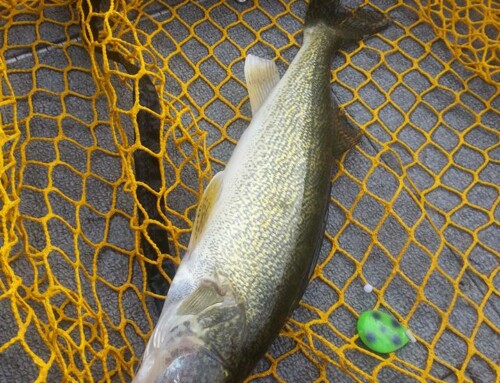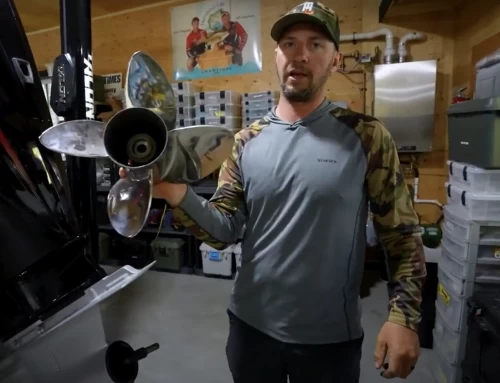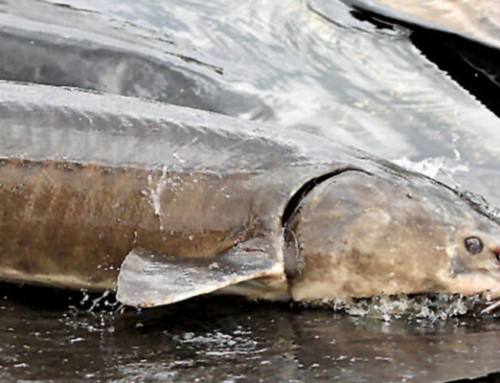The 2015 Winnebago walleye tagging effort is in the books and the numbers are in. Walleye tagging efforts took place from 03/24/2015-04/22/2015 and fish were primarily collected during electrofishing surveys, but we also tagged some walleye during some yellow perch and muskellunge fyke netting surveys. In total, there were 3,042 mature males, 515 mature females, and 216 immature females tagged this spring. Since walleye tagging efforts began in 1993, the number of mature male walleye tagged in a year has ranged from 143-11,471 with the average being 5,825. The number of mature females tagged has ranged from 32-2,743 with the average being 1,218. Therefore, the number of walleye tagged this spring was below the normal average that was primarily due to the low water levels making access to spawning marshes difficult. However, the number of walleye tagged this spring should still provide good angler exploitation estimates, which is the primary reason for tagging walleye each spring.
This was also the first spring that fisheries staff focused some tagging efforts on immature females on Lake Winnebago. In particular, we targeted the 2011 year class that is now 4 years old and mostly range from 16-18 inches long. At 4 years old, approximately 30% of the females from the 2011 year class would have reached maturity and made their first spawning run this spring while around 70% did not make a spawning run this year. Windy conditions throughout the spring made electrofishing on Lake Winnebago difficult, but fisheries staff did tag 216 immature females this spring. This is a number that I would like to see increase in future years, but the tagging efforts in 2015 will give us the first estimate on record of angler exploitation for immature females.
Lastly, the big question of the day: what are the predictions for the walleye year class strength this year? More specifically, many have been asking if the rain that came in mid-April and rise in river stage would help the walleye hatch. Based on our walleye tagging efforts peak spawning likely occurred during the first week of April, but there were likely some earlier and later runs of fish that occurred as well. Water levels on the Wolf River began to rise on April 10th following a rain event that occurred the previous day. The black line on the figure below indicates the rise in the hydrograph that occurred in mid-April due to rain events. It is likely that the majority of the spawn occurred during the low water level conditions when spawning marsh habitat was limited. Therefore, we could be in line for a weak walleye year class this year. However, with the rise in water levels and increase in available spawning marsh habitat at the tail end of the spawn it is tough to predict what Mother Nature will throw us. Last year’s weak year class was a prime example of this, we had good water levels in the spawning marshes that were comparable to 2011 (blue line below) and 2013 (green line below), which both had strong walleye year classes. The 2014 weak walleye year class that was attributed to cool water temperatures that may have led to a lack of zooplankton for walleye fry to eat. For 2015, we will have to wait until the Lake Winnebago bottom trawling assessment this fall to see what Mother Nature has in the cards.
Please remember, if you happen to catch tagged walleye please be sure to report them with the following information: tag number, species, date caught, waterbody, general location, length (if you have it), and if the fish was kept or released. There are three methods for reporting tag returns, including emailing them to[email protected], mailing them to the Oshkosh DNR Office, 625 East County Road Y, Suite 700 in Oshkosh, WI 54901, or calling 920-303-5429. Fisheries staff also tagged 516 yellow perch in the Fox River near Oshkosh and some locations on Lake Winnebago so be on the lookout for those as well. Good luck fishing the rest of the spring!

